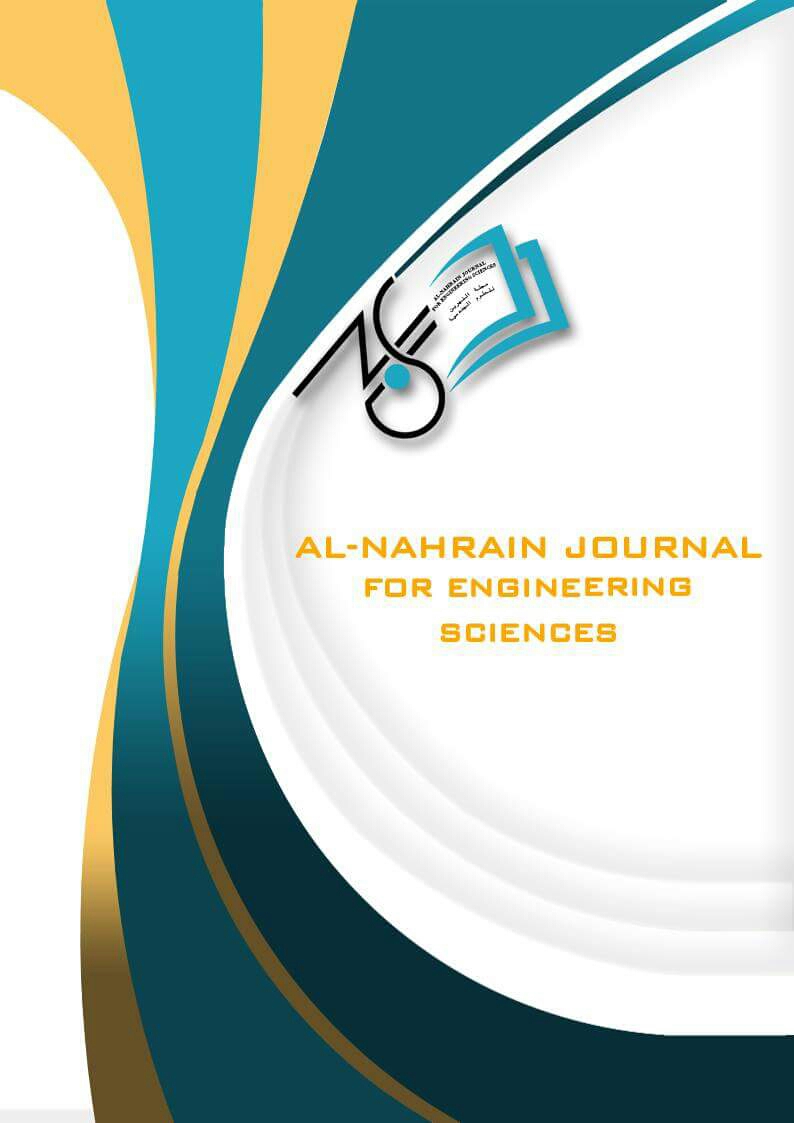Abstract
Many researchers have applied several experiments and research studies by developing criteria's design of drainage to improve the drainage process, and to show that the filters plays an important role to improve and maintain the drainage system from being blocked due to siltation. There are several types of filters, including granular mineral materials and organic materials, the other filter that was used is made from a special fabric material such as paper, burlap, or special fabric textile material. The objective of this study is to evaluate the performance of textile filters, and if it is desirable and suitable for Iraqi soil using statistical analysis. This study was conducted in the laboratory using sand tank model and two types of filters (graded crushed gravel and textile) with two types of soil (sandy soil and loamy soil) to compare and evaluate the hydraulic performance and the efficiency of utilizing textile filter instead of graded crushed gravel filter in drainage systems using statistical analysis methods. These statistical analysis show that there was a good agreement between measured and theoretical values of entrance resistance when using the two filters in sandy soil. On the other hand, the results showed that there was a weak performance when textile filters in were used in heavy soil (loamy soil) due to the high value of root mean square error (RMSE) and low value of agreement index (d). The results of statistical analysis show that the textile filter is desirable and suitable for Iraqi soil especially for sandy soil due to low entrance resistance of flow compared to loamy soil.
Keywords
Graded Crushed Gravel Filter; Textile Filter; Entrance resistance.
Abstract
الكثير من الباحثين اجروا مجموعة من التجارب والبحوث وذلك من خلال تطبيق المعاير التصميمية لتحسين الاداء الهيدروليكي لمنظومة المبازل الحقلية ومن خلال استعمال انواع مختلفة من المرشحات (الفلتر) اضافة الى ذلك أهميته لحماية المبازل والحفاظ على منظومة المبازل من الانسداد بسبب الرسوبيات. هنالك عدة انواع من المواد المستعملة كمرشحات في تغليف المبازل المغلقة منها المواد الصخرية مثل الحصو الطبيعي او المكسر والمواد العضوية كاوراق الشجر والألياف النباتية وهنالك أيضا مواد صناعية تصنع من الورق والالياف الزجاجية وتعرف بالمرشحات النسيجية وقد تكون مصنعة من مادة البولي بروبلين والبولستر والبولي اثلين وغيرها من المواد. تهدف الدراسة الى تقييم اداء المرشح النسيجي والمصنوع من الالياف الصناعية ومدى ملأمته للترب العراقية وذلك من خلال أستخدام التحليل الاحصائي. تم أجراء البحث في المختبر وبأستعمال نموذج حوض الرمل ومن خلال استخدام نوعين من المرشحات وهي المرشح الحصوي المكسروالمدرج والمرشح النسيجي الصناعي مع نوعين من الترب وهي تربة رملية وتربة مزيجية ويهدف البحث ايضا الى امكانية استخدام الفلتر النسيجي بدلا من الفلتر الحصوي المكسروالمدرج في المبازل الحقلية. اظهرت نتائج أستخدام التحليل الاحصائي لتقييم اداء المرشحات وتقييم مقاومة الدخول المقاسة ومدى تطابقها مع القيم المحسوبة نظريا هوملائمة كلا المرشحين عند استعمالهما في الترب الخفيفة (الرملية). ومن جانب آخر اظهرت النتائج عدم ملائمة الفلتر النسيجي في الترب الغرينية (المزيجية) وذلك لأرتفاع قيم ((RMSE وأنخفاض قيم التطابق ) d ( واللذان بالامكان اعتبارهما كمؤشرين لمستوى تطابق القيم النظرية مع القيم المقاسة مما يساعد على توقع قيم مقاومة الدخول عند تصميم شبكة المبازل الحقلية وحساب المسافات بين المبازل ولترب مختلفة النسجة وبالنتيجة فأن النوعين من المرشحات ملأئمة للترب الخفيفة وذلك لأنخفاض معدل مقاومة دخول المياه الى المبزل.
Keywords
: الفلتر الحصوي المدرج المكسر، الفلتر النسيجي، مقاومة الدخول.
